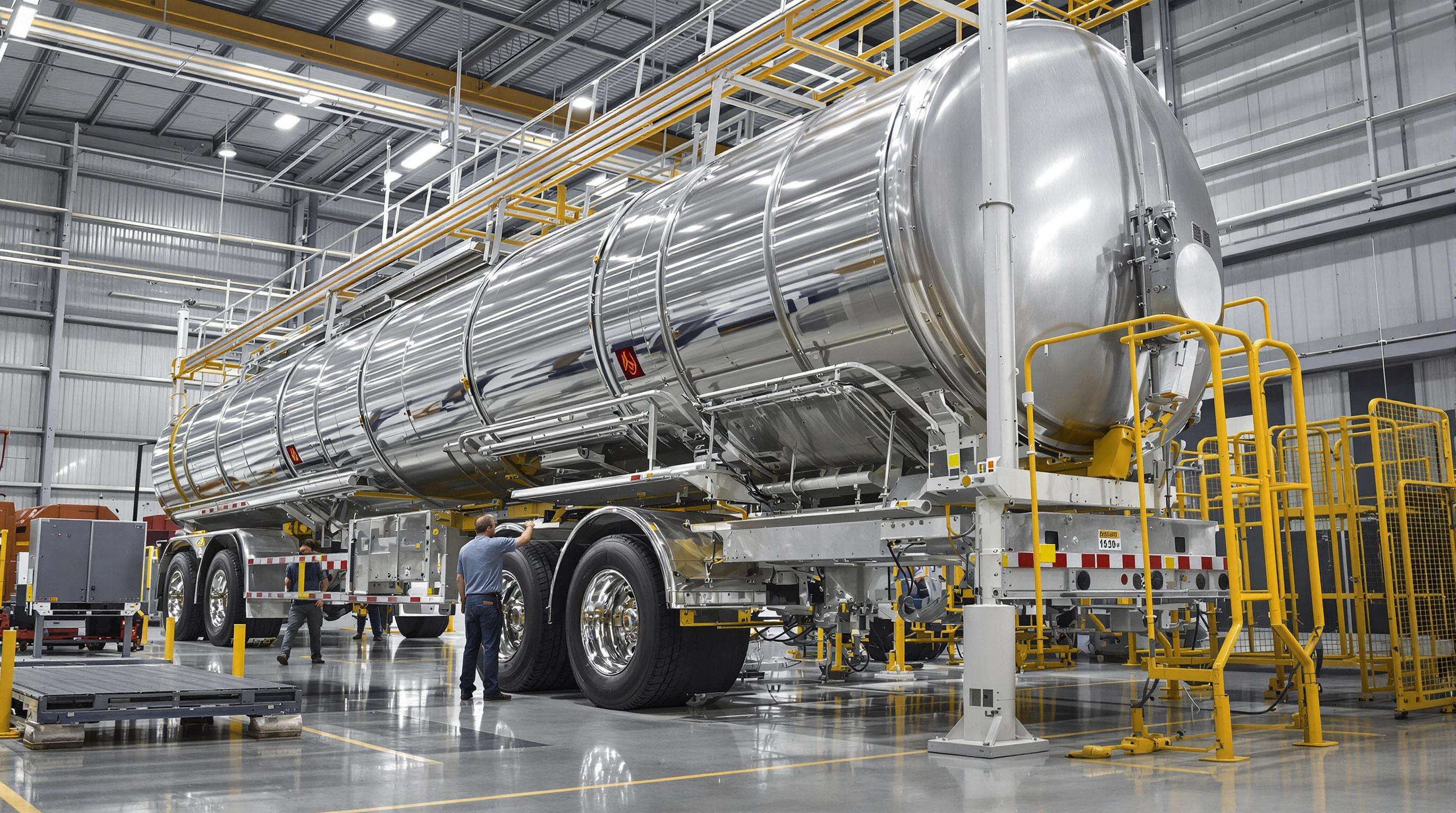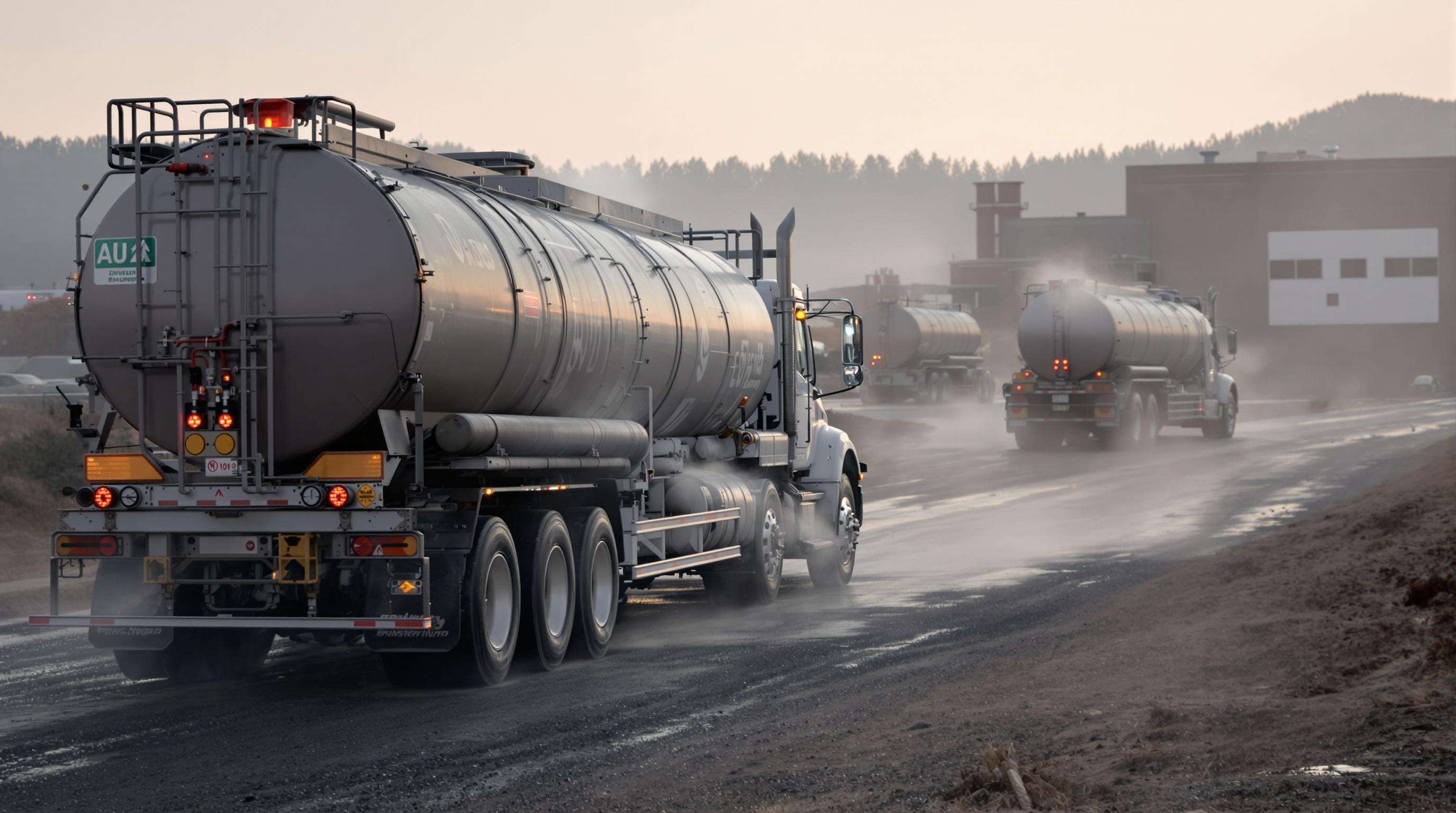Core Functions of Oil Tank Trucks in Industrial Operations
Primary Role of Oil Tank Truck Specifications in Fuel Transportation Logistics
The specs on oil tank trucks really matter when it comes to keeping things safe and running efficiently throughout the fuel delivery process. Today's models come equipped with double wall construction and fancy pressure sensors that cut down on spills quite a bit actually around 38 percent according to that Global Fuel Transport Report from last year. These upgrades help companies stay within hazmat rules without sacrificing how much product they can carry at once. Getting this right is pretty important for making sure fuel gets from those big warehouses out to wherever it needs to go without any hiccups along the way.
Supporting Continuous Operations in Remote Industrial Sites
Oil tank trucks need special features like reinforced frames and smart suspension setups to handle rough ground found at mines and construction sites. According to recent industry data from 2024, around two thirds of workers say they never run out of fuel during tough jobs when their trucks have at least eight wheels driving plus backup power generators. The ability to check fuel levels while moving around makes all the difference too. Operators can spot low tanks before they hit empty, which saves time and money that would otherwise be lost waiting for refills in inconvenient locations.
Integration Within Oil Refinery Distribution Networks
When oil tank trucks follow standard specs, they work much better with those automated loading systems at refineries. Tankers equipped with proper API certified discharge valves plus good vapor recovery setups cut down on transfer time quite a bit actually around 25% faster than older models that don't meet these standards. At big distribution centers processing anywhere from 12 to 15 million liters every day, this kind of efficiency matters a lot. Small problems in the system there can quickly turn into serious delays because so much product moves through these facilities constantly.
Adaptability of Oil Tank Truck Specifications Across Fuel Types
Modular tank configurations support the transport of diverse fuels—from low-viscosity diesel to temperature-sensitive biofuels—without cross-contamination.
| Feature | Diesel Transport | Biofuel Transport |
|---|---|---|
| Tank Lining | Epoxy-coated steel | Polyurethane composite |
| Temperature Control | Insulation only | Active cooling systems |
| Compartmentalization | Single-section designs | Multi-segment partitions |
Fleets with adaptable specifications secured 40% more contracts in 2023 due to faster fuel switching and reduced contamination risks (Energy Logistics Review 2023).
Engineering Design and Structural Integrity of Oil Tank Truck Specifications

When it comes to modern oil tank trucks, what really matters is how well they hold up over time. Most are built using high strength steel mixed with aluminum alloys because these materials just last longer. They need to pass strict tests too, like those set by API 653 for corrosion resistance. Basically, important parts must be able to withstand at least 248 MPa of force before bending or breaking. Why does this matter? Well, these trucks often carry fuels that can eat away at metal, especially when there's ethanol blended in. Thanks to smart material selection, many of these tanks stay functional for over two decades despite being exposed to harsh conditions day after day.
Material Composition and Construction Standards for Durability
Tank walls are built from 8–12 mm thick cold-rolled steel and reinforced with circumferential rings to withstand internal pressures of 35–50 psi during transit. According to ASME (2023), this design reduces fatigue failure rates by 63% compared to older models, ensuring long-term reliability in demanding service cycles.
How Oil Tank Truck Specifications Enhance Safety and Prevent Leaks
Geometric baffle systems divide tanks into 4–8 independent chambers, reducing liquid sloshing forces by 82% during sudden maneuvers. Double-walled construction with interstitial monitoring enables leak detection within 0.5 seconds of breach initiation—critical when transporting hazardous materials like aviation fuel.
Customization of Oil Tank Truck Specifications by Capacity and Terrain
Articulated chassis designs support scalable capacities, ranging from 5,000-liter urban delivery units to 40,000-liter cross-country haulers. Manufacturers tailor vehicles to specific environments: triple-redundant hydraulic braking for mountainous routes and reinforced rear axles (17-ton load rating) for heavy-duty operations in oil sands regions.
Operational Efficiency and Performance in Fuel Delivery
Delivery Turnaround Times and Fleet Utilization Metrics
When oil tank trucks have been optimized for performance, they really make a difference in how fast deliveries happen and how productive the whole fleet becomes. The newer models with those 12 separate compartments plus automatic loading systems cut down time spent at depots by around 18 percent when compared to older single tank versions. Most companies are now installing GPS routing systems as standard equipment these days, something that's become common practice since about 2022 in roughly three out of four new trucks built. This technology helps keep vehicles working harder too, increasing overall usage rates somewhere between 15 to maybe even 20 percent because drivers can adjust routes while on the road. As a result of all these improvements, most facilities needing fuel replenishment get their supplies right on schedule about 98 times out of 100, according to recent industry reports from last year's petroleum logistics studies.
Fuel Preservation and Temperature Control During Transit
Modern oil tank trucks come equipped with multiple layers of insulation plus special phase change materials that help keep fuels stable. These temperature controlled sections can hold things steady around +/- 2 degrees Celsius, which matters a lot when outside temps hit 50 degrees Celsius or higher, something really important for moving those delicate biofuel products. The vapor recovery systems meet all the new EPA 2024 rules and stop about 99.6 percent of those pesky hydrocarbon emissions when transferring fuel. Tank designs with internal baffles cut down on fuel sloshing losses by roughly 27%, making transport much safer and more efficient overall.
Impact of Oil Tank Truck Specifications on Fuel Quality and Delivery Reliability
The 2023 National Transport Safety Board report attributes an 89% reduction in fuel contamination incidents since 2020 to advanced polymer tank liners and pneumatic suspension systems. Sealed quick-connect couplings, now standard in API RP 1004-certified trucks, have reduced spill-related downtime by 62%, ensuring consistent fuel quality from refinery to end-user storage.
Global Safety Benchmarks Shaping Oil Tank Truck Specifications
The way we build oil tank trucks today is heavily influenced by international rules like MARPOL Annex I and API Standard 653. These regulations basically force manufacturers to include things like double walls on tanks and proper pressure relief mechanisms. Most companies have gotten on board with these changes too. According to recent data from the International Maritime Organization, around 93% of all industrial fuel transport vehicles meet the ISO 28300:2023 safety standards for collisions. This has actually made things better - spill incidents dropped by nearly 30% since before 2020. Of course there are still regional variations worth noting. The European Union passed Directive 2024/67 last year which specifically demands vapor recovery systems for their fleet. Meanwhile over in North America, regulators tend to focus more on making sure trucks can handle rollovers without leaking.
Emergency Response Systems in Modern Oil Tank Trucks

Modern oil tank trucks now come equipped with automatic shut off valves that kick in when GPS tilt sensors detect any movement beyond plus or minus 5 degrees. They also have thermal monitoring systems which activate cooling sprays once temperatures hit around 65 degrees Celsius. According to updated API 653 standards, all trucks transporting more than 10 thousand liters must be fitted with emergency isolation systems designed to stop most leaks before they become disasters. These safety features have made a real difference too. Remote mining sites saw almost half fewer fires last year compared to previous years after implementing these systems, according to Department of Transportation reports from early 2024. The technology isn't just fancy hardware it's actually saving money and lives out there in the field.
Balancing Cost-Efficiency With Regulatory Compliance in Specification Design
Manufacturers save money when they use these special lightweight alloys which weigh about 6% less than regular steel, plus they've started making tanks in modular designs that cut down on retrofitting costs around $18k per unit. According to research from FM Global in 2023, better specs actually bring down insurance bills each year by roughly 15%. What's even more impressive is how much downtime gets reduced too. The numbers show something like $740 thousand saved per truck just from avoiding those costly interruptions over seven years. So really, when companies focus on safety improvements, they end up boosting their bottom line at the same time. These two things work together instead of against each other in the long run.
FAQ Section
What are the key features of oil tank trucks?
Oil tank trucks are equipped with specifications such as double wall construction, pressure sensors, reinforced frames, smart suspension setups, and API certified discharge valves to enhance safety, reduce spills, and support smooth operations.
How do oil tank truck specifications enhance efficiency?
Specifications like automatic loading systems, GPS routing, multiple compartments, and advanced vapor recovery systems improve fuel delivery turnaround times, fleet utilization, and reduce hydrocarbon emissions.
How do oil tank trucks adapt to different fuel types?
Oil tank trucks can transport diverse fuels with modular tank configurations and proper compartmentalization to prevent cross-contamination.
What materials are used in constructing oil tank trucks?
Oil tank trucks are often made with high strength steel mixed with aluminum alloys, meeting API 653 for corrosion resistance to withstand harsh conditions.
Are modern oil tank trucks equipped with emergency response systems?
Yes, modern oil tank trucks feature automatic shut off valves, thermal monitoring systems, and GPS sensors to prevent leaks and manage emergencies efficiently.
Table of Contents
- Core Functions of Oil Tank Trucks in Industrial Operations
- Engineering Design and Structural Integrity of Oil Tank Truck Specifications
- Operational Efficiency and Performance in Fuel Delivery
- Global Safety Benchmarks Shaping Oil Tank Truck Specifications
- Emergency Response Systems in Modern Oil Tank Trucks
- Balancing Cost-Efficiency With Regulatory Compliance in Specification Design
- FAQ Section

